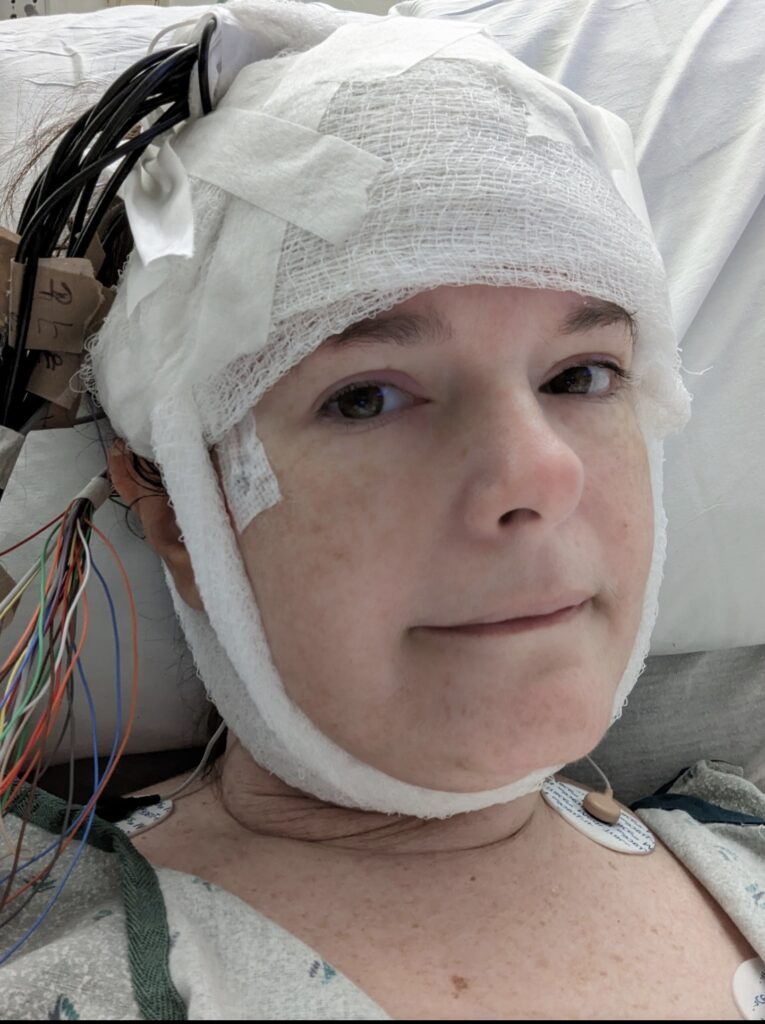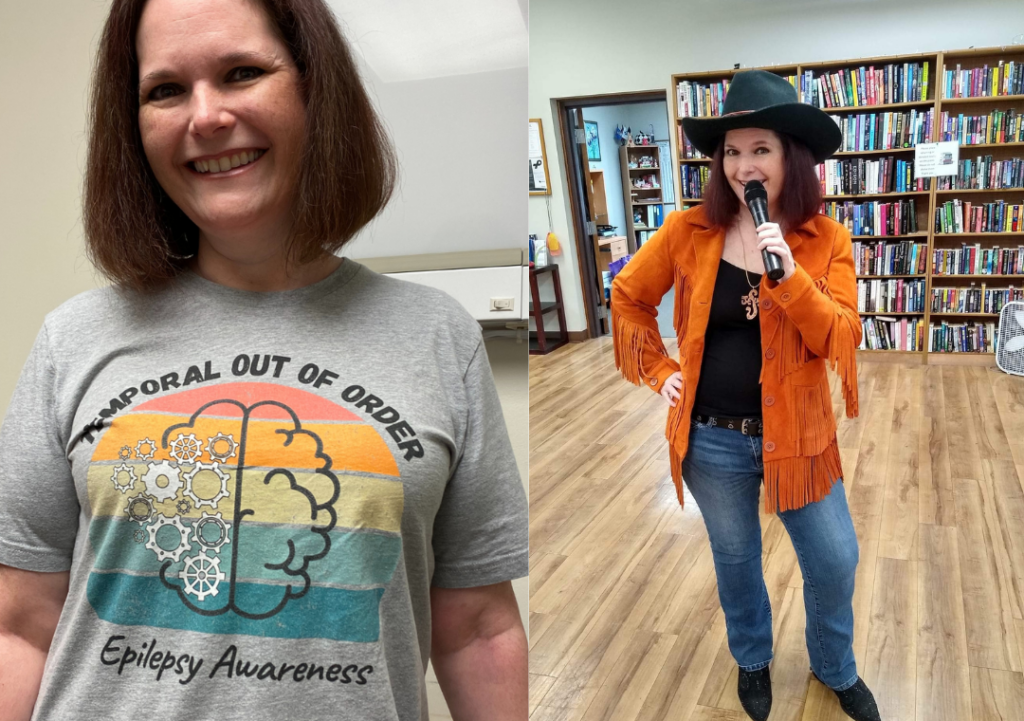Marie Zeligman has always loved music. She started singing at a young age in school plays like Annie and The Sound of Music. In high school, she began writing her own songs and even recorded her first CD in Nashville, TN.
“I have a classic country sound,” she explained. “I was told that I always had that Patsy Cline voice.”
Later, she joined a country music band and toured around Southern California. The group even competed in and won Country Showdown, one of the largest country music talent competitions in the United States. Eventually, Marie and her brothers, who are both musicians, moved to Branson, MO to become entertainers.
At the age of 38, Marie experienced her first seizure while she slept. Two months later, she was awakened by a knock at the door. It was the paramedics. They had been called to her home by her six-year-old son, who had been trying to wake her, but she wasn’t moving. She had suffered another nocturnal seizure. She was eventually diagnosed with adult-onset epilepsy and prescribed a series of different medications.
“I was on so many medications that had so many side effects for me, but none of them stopped the seizures. I was told that nighttime seizures rarely transition to daytime seizures, but mine did.”
The seizures were becoming so bad that they began affecting her ability to work a day job. It was also making it nearly impossible for her to do the one thing she loved most, perform her music.
In 2022, Marie was referred to the Washington University and Barnes-Jewish Comprehensive Epilepsy Center. After a series of tests, she was introduced to WashU neurosurgeon Jon T. Willie, MD, PhD. Dr. Willie discussed treating her epilepsy with a surgical procedure called Stereotactic electroencephalography (SEEG). During SEEG, electrodes resembling thin wires, are surgically placed within the brain through small incisions, to pinpoint the precise location from where the seizure spreads.

“I was scared, but Dr. Willie made me feel at ease,” she said. “I knew that surgery was a risk, but this is the path that I had to take to possibly become seizure free.”
Once the epilepsy team was able to measure Marie’s brain waves from the SEEG surgery, they developed a strategy for a second surgery called Stereotactic laser ablation. This is a procedure that uses tiny optical fibers to deliver laser energy that gently heats and ablates seizure-causing tissues.
“Today, most of the epilepsy surgeries we perform require only small holes and are closed with a single stitch,” said Dr. Willie. “Most patients go home from the hospital the following day with minimal pain, while still benefiting from procedures that can treat—and very often eliminate their epilepsy.”
Since the second surgery in April 2023, Marie has been seizure free. She has gone back to performing live in Branson and has started recording a new album. She’s also very close to receiving clearance to drive again.
“I’m excited and so grateful to be where I am today and to be a patient of Dr. Willie’s.”
To make an appointment with a Washington University epileptologist, neurologist or neurosurgeon at Barnes-Jewish Hospital, call 855.925.0631.
